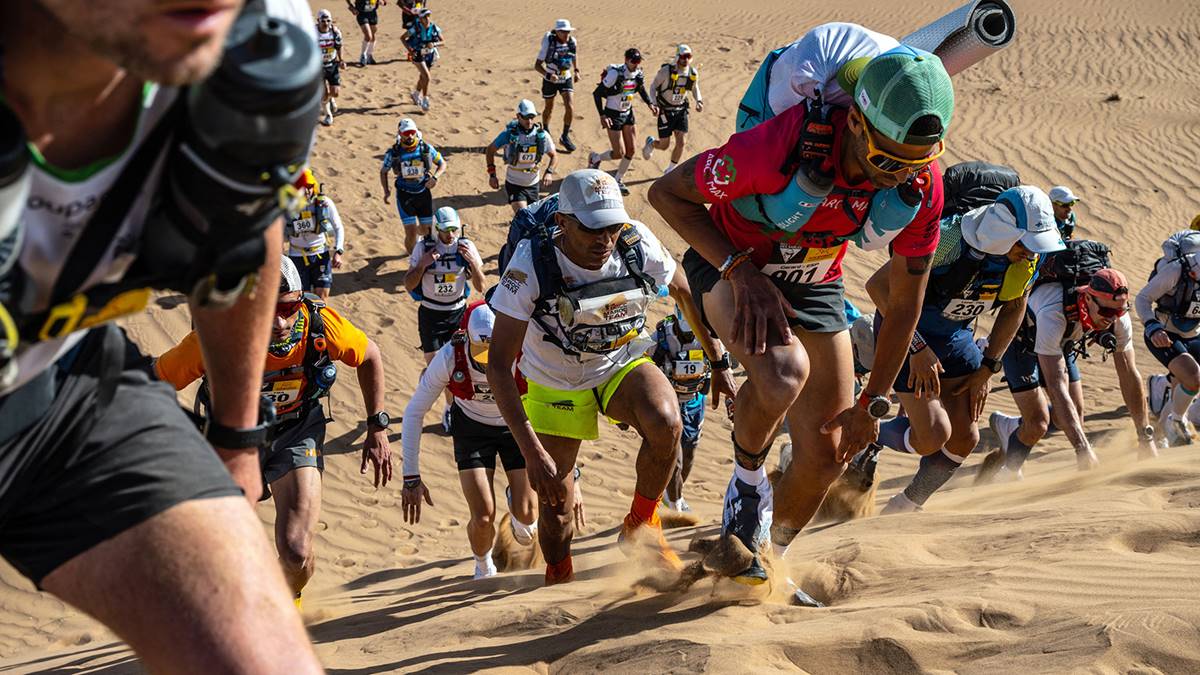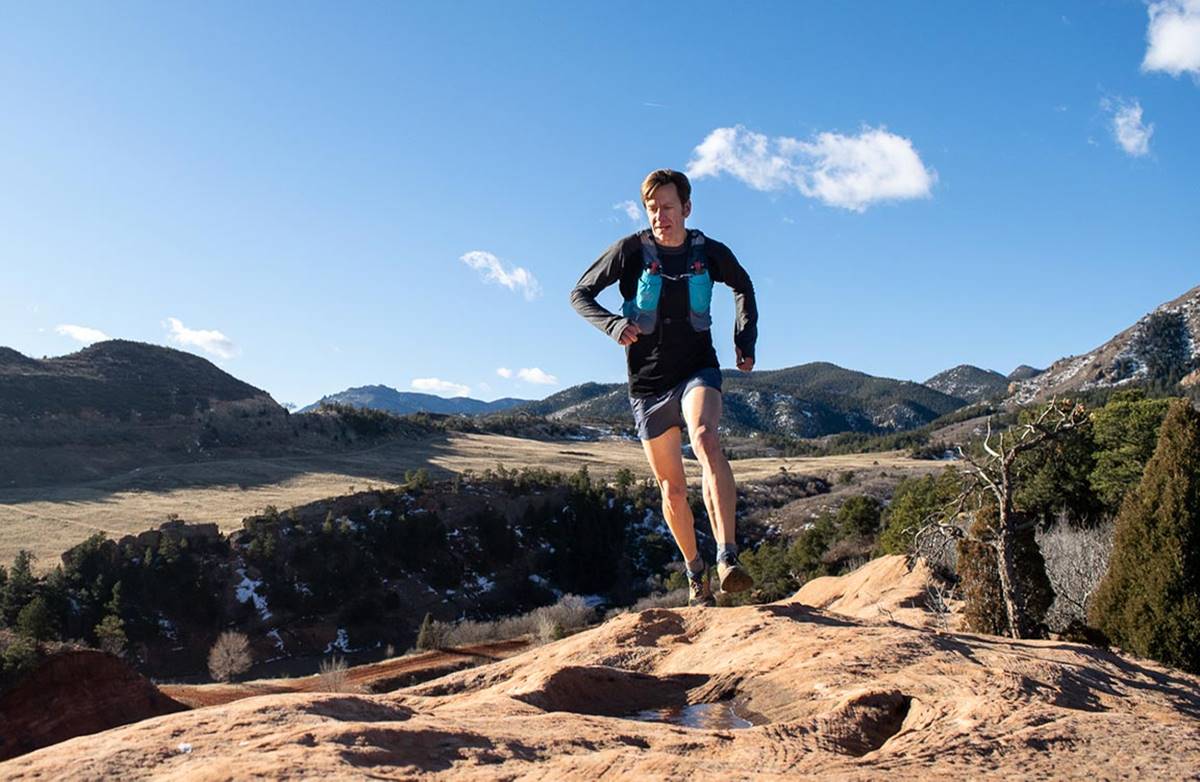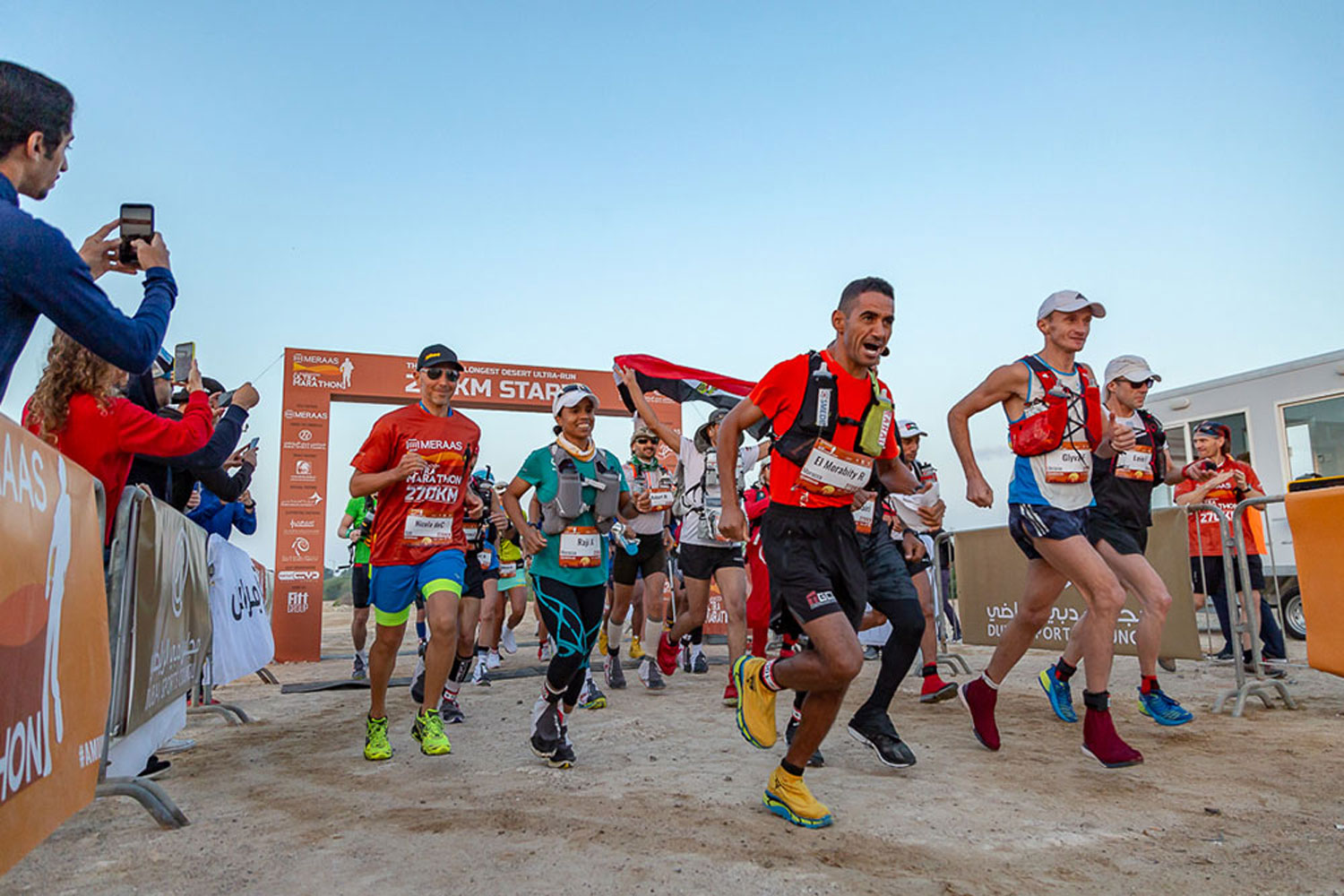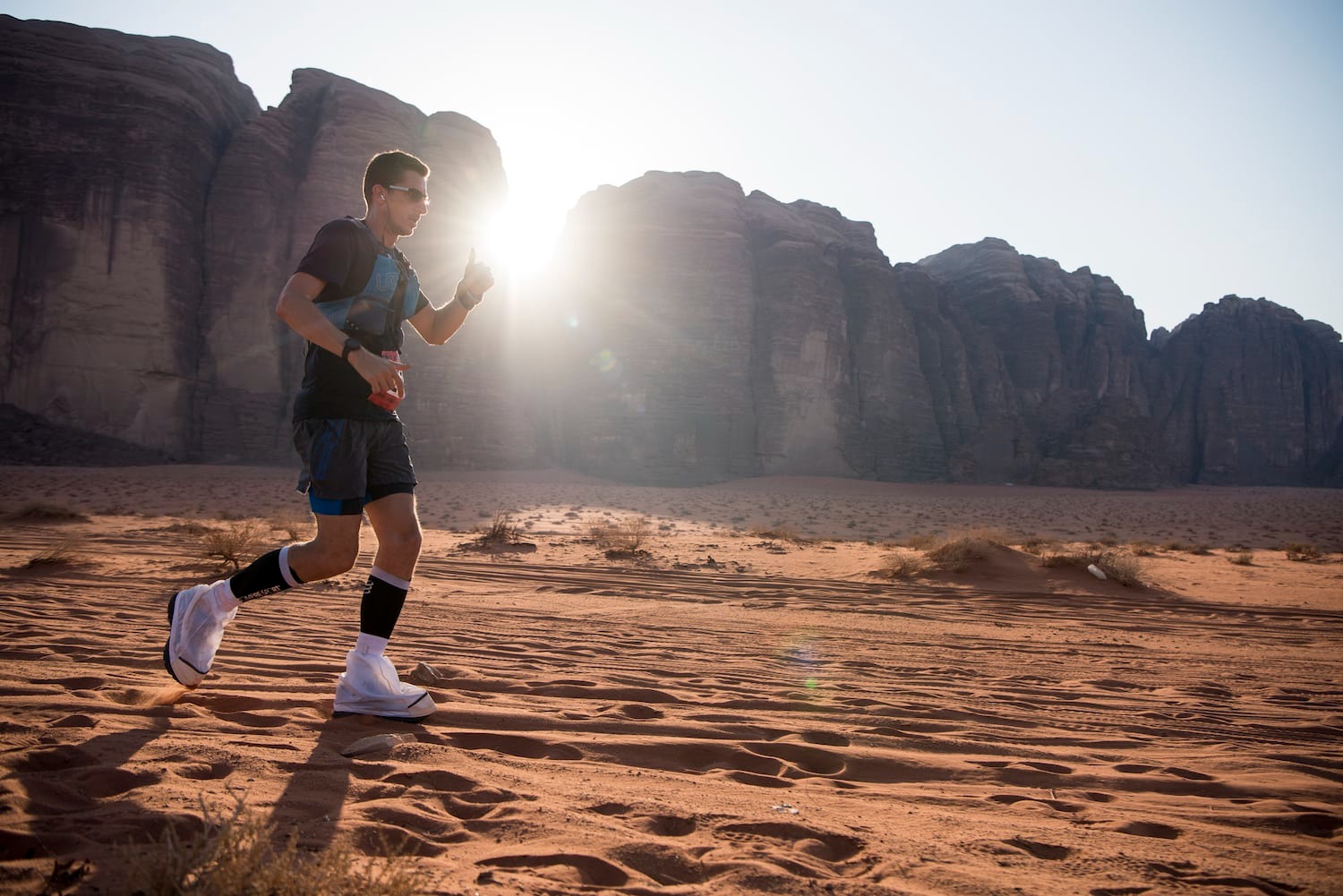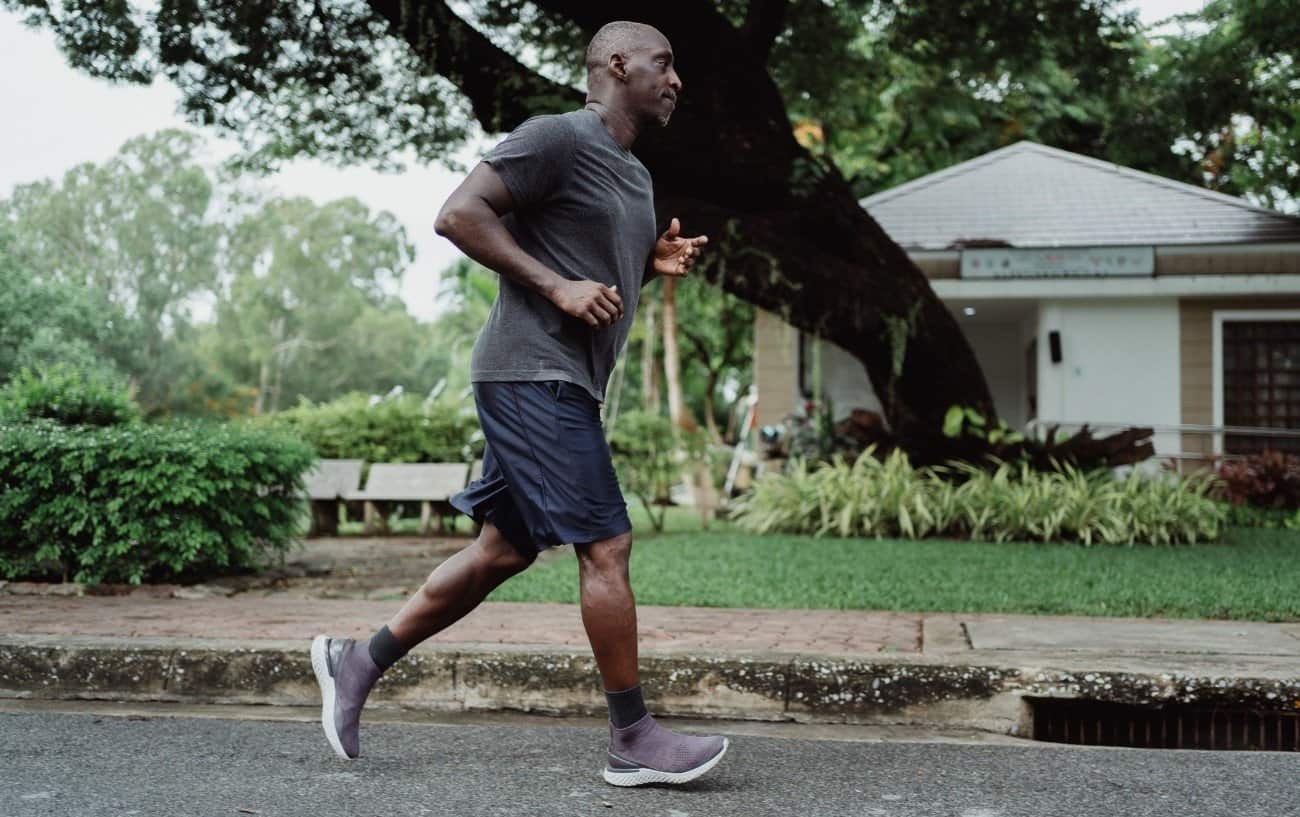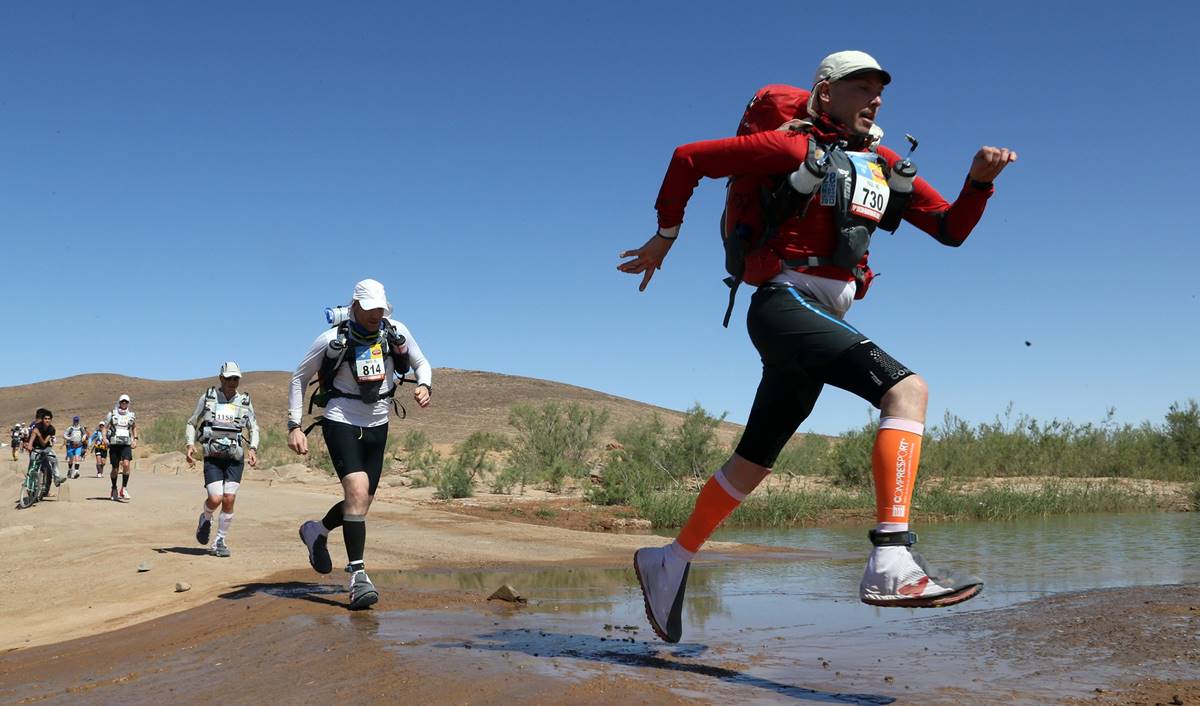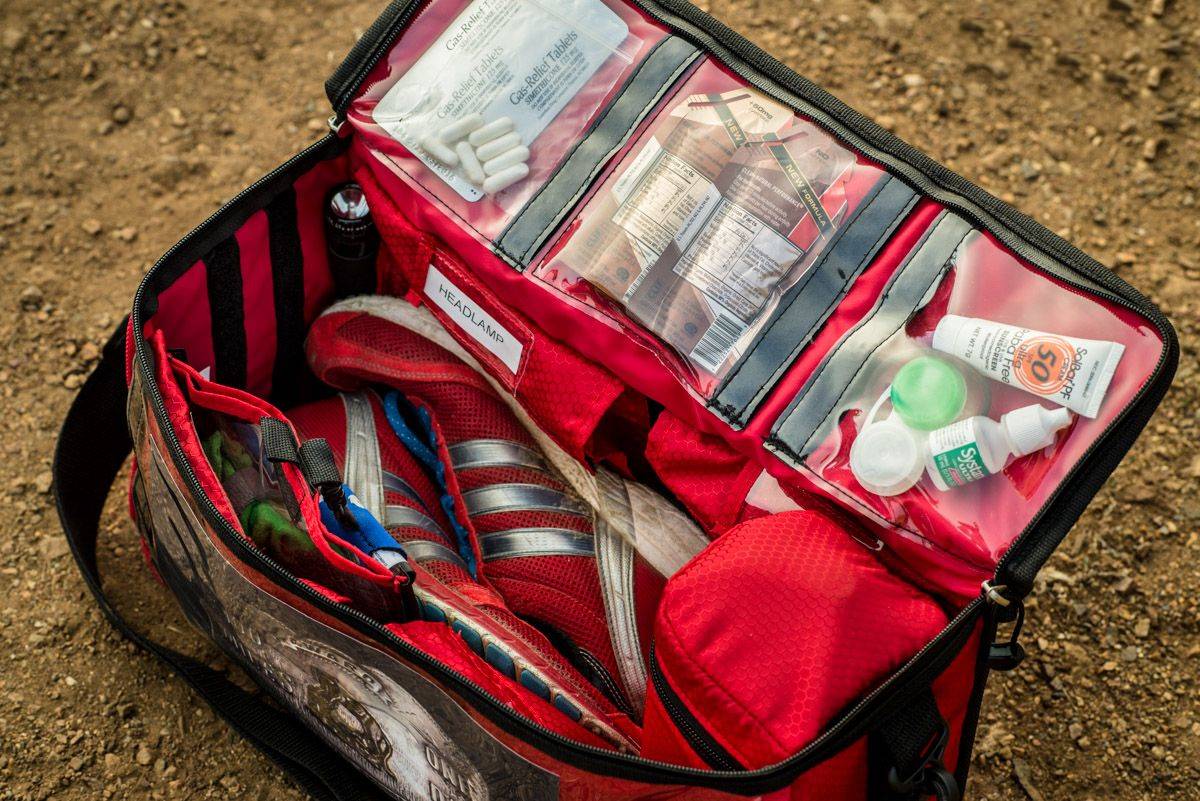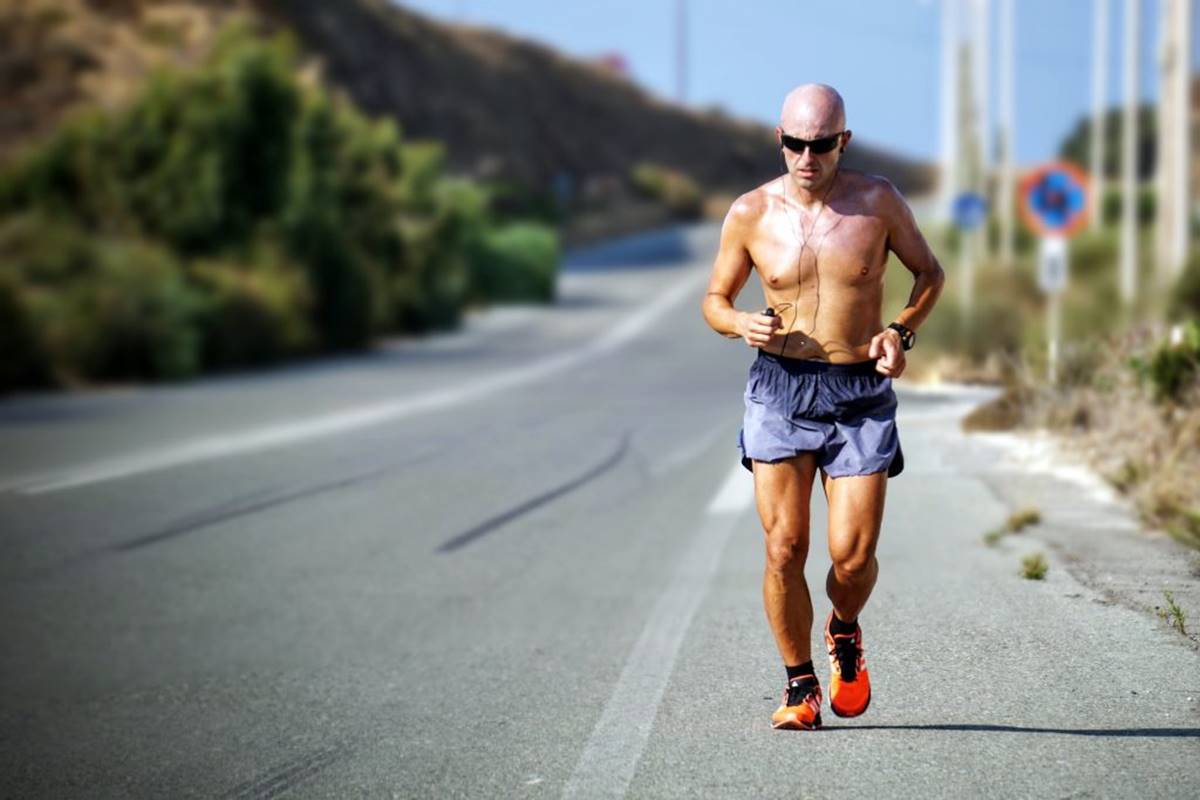

Featured
How To Heat Train For An Ultramarathon
Modified: January 2, 2024
Learn how to heat train for your next ultramarathon with our featured guide. Maximize your performance and endurance in extreme conditions.
Introduction
Welcome to the challenging and exhilarating world of ultramarathons! These grueling endurance races test the limits of human strength, stamina, and mental fortitude. While ultramarathons are already demanding, adding the factor of heat takes the challenge to a whole new level.
Running in extreme heat conditions can have a significant impact on performance and can even pose health risks if not properly prepared for. Heat training, therefore, becomes crucial for athletes aiming to conquer races in hot climates or during the scorching summer months.
This article will guide you through the ins and outs of heat training for ultramarathons. From understanding the importance of heat training to practical tips and strategies, we will cover everything you need to know to prepare yourself for the heat and emerge victorious in your race.
So, whether you’re a seasoned ultramarathoner looking to push your boundaries or a novice planning to tackle your first race in the heat, read on to discover the secrets of successful heat training.
Understanding Ultramarathons
Ultramarathons are long-distance running races that go beyond the traditional marathon distance of 26.2 miles (42.2 kilometers). These races typically range from 50 kilometers to over 100 miles and can take place on various terrains, including roads, trails, mountains, and even deserts.
What sets ultramarathons apart from regular marathons is the sheer physical and mental endurance required to complete them. The combination of long distances, challenging terrain, and extended periods of physical exertion makes ultramarathons one of the most demanding endurance sports.
Ultramarathons are not just about finishing first; rather, they are about pushing personal limits and overcoming obstacles. Participants often face adverse weather conditions, unpredictable terrain, and the need to maintain focus and motivation for extended periods.
Adding to the complexity, some races are specifically designed to be multi-day events, where runners must cover a predetermined distance each day. This test of resilience and endurance requires exceptional mental strength and meticulous physical preparation.
Beyond the mental and physical challenges of ultramarathons, the element of temperature can play a significant role, especially in races held in hot climates. Running for extended periods in extreme heat can lead to elevated heart rates, increased sweat rates, and greater fluid and electrolyte losses. It can also increase the risk of dehydration, heat stroke, and other heat-related illnesses.
Understanding the unique demands of ultramarathons is vital for effective heat training. By gaining insight into the nature of these races, you can tailor your training and preparation to ensure optimal performance and reduce the risk of heat-related issues.
Importance of Heat Training
Heat training plays a crucial role in preparing for ultramarathons in hot climates or during the scorching summer months. It is more than just getting used to running in the heat; it is about conditioning your body to perform optimally in challenging conditions. Here are some key reasons why heat training is important:
1. Improved Performance: Heat training helps your body adapt to the physiological stress of exercising in high temperatures. It can enhance your cardiovascular fitness, improve heat tolerance, and increase your body’s efficiency in regulating body temperature. By adapting to the heat, you can sustain a higher level of performance during your race.
2. Enhanced Sweat Response: Heat training increases your sweat rate and helps your body produce more sweat at a lower core body temperature. This improved sweat response allows for better cooling and helps prevent overheating during prolonged exertion in hot conditions.
3. Efficient Fluid and Electrolyte Balance: Heat training helps your body become more efficient in maintaining fluid and electrolyte balance. It trains your kidneys to conserve water and sodium while maintaining proper hydration levels. This is crucial for preventing dehydration and maintaining optimal performance.
4. Mental Toughness: Heat training builds mental resilience and prepares you to endure discomfort and fatigue that often accompany ultramarathons in hot conditions. By training in the heat, you develop the mental strength necessary to push through challenging moments and stay focused on your goals.
5. Injury Prevention: Heat training exposes any weaknesses in your body’s heat adaptation mechanisms. By gradually increasing your training duration and intensity in the heat, you give your body the opportunity to adapt and strengthen its ability to cope with the demands of the race. This can help reduce the risk of injuries caused by overheating or dehydration.
6. Confidence: Heat training gives you the confidence to face the challenges of running in hot conditions. By putting in the necessary training and preparing your body, you enter the race knowing that you have done everything possible to acclimate and perform at your best.
Overall, heat training is a vital component of ultramarathon preparation. It not only improves your physical performance but also enhances your mental resilience and confidence. By incorporating heat training into your training plan, you give yourself the best chance of success in ultramarathons held in hot climates or during the summer season.
Preparing for Heat Training
Before embarking on heat training, it is crucial to ensure that you are adequately prepared to maximize the benefits and minimize the risks. Here are some key steps to take when preparing for heat training:
1. Evaluate your Fitness Level: Assess your current fitness level before beginning any heat training program. Ensure that you have a solid foundation in running and have gradually increased your mileage and intensity over time. If you are new to running, it is recommended to build a base level of fitness before incorporating heat training into your routine.
2. Consult with a Healthcare Professional: Speak with your healthcare professional to ensure that you are in good health and capable of handling the physical stress involved in heat training. They can offer valuable advice and guidance tailored to your specific needs.
3. Gradual Acclimatization: Start by gradually exposing yourself to warmer temperatures. Begin with shorter runs in the heat and gradually increase both the duration and intensity of your training sessions. This allows your body to adapt and minimizes the risk of heat-related injuries or illnesses.
4. Time of Day: Plan your training runs during the hottest parts of the day to simulate race conditions. Early mornings or late afternoons are usually the hottest times, and training during these periods can help your body adjust to running in high temperatures.
5. Dress Appropriately: Wear lightweight, breathable clothing that allows sweat to evaporate and aids in cooling. Opt for light-colored clothing to reflect sunlight and prevent overheating. Also, consider wearing a hat and sunglasses to protect yourself from direct sun exposure.
6. Stay Hydrated: Hydration is crucial during heat training. Start each training session well-hydrated, carry a water bottle or hydration pack, and sip fluids regularly throughout your run. Aim to consume electrolyte-rich drinks to replenish lost minerals and maintain proper hydration levels.
7. Monitor Your Body: Pay close attention to your body’s signals during training sessions. Be aware of signs of overheating or dehydration, such as dizziness, cramps, excessive fatigue, or an elevated heart rate. If you experience any of these symptoms, it’s important to stop, rest, and hydrate immediately.
8. Recovery and Rest: Allow for adequate rest and recovery between heat training sessions. Your body needs time to adapt to the stress of the heat, and overtraining can lead to decreased performance and increased risk of injury. Incorporate rest days and incorporate recovery techniques such as foam rolling and stretching into your routine.
By following these guidelines, you can prepare yourself effectively for heat training. Remember to listen to your body, stay hydrated, and gradually increase the intensity and duration of your heat training sessions. With careful preparation, you will lay a solid foundation for successful heat adaptation and performance in your ultramarathon.
Essential Gear for Heat Training
When it comes to heat training, having the right gear can make a significant difference in your comfort, performance, and safety. Here are some essential pieces of gear to consider when training in hot conditions:
1. Lightweight and Breathable Clothing: Opt for moisture-wicking fabrics that can effectively draw sweat away from your body and allow for quick evaporation. Look for lightweight, loose-fitting garments that provide ample ventilation and freedom of movement. Avoid cotton as it tends to trap moisture and can lead to discomfort and chafing.
2. Sun Protection: Protecting your skin from the sun’s harmful rays is crucial during heat training. Wear a wide-brimmed hat or a visor to shield your face and scalp from direct sunlight. Apply a sweat-resistant sunscreen with a high SPF to all exposed skin, including your neck, arms, and legs.
3. Sunglasses: Invest in a pair of sunglasses that provide UV protection and have a comfortable fit. This will not only protect your eyes from the sun’s glare but also guard against dust and debris during your training runs.
4. Hydration Pack or Water Bottle: To ensure proper hydration during your heat training, invest in a hydration pack or carry a water bottle with you. Look for packs or bottles that are easy to drink from and have a sufficient capacity to support your long runs.
5. Electrolyte Supplements: During prolonged exercise in the heat, your body loses essential electrolytes, such as sodium, potassium, and magnesium, through sweat. Consider taking electrolyte supplements or using electrolyte tablets to replenish these lost minerals and maintain proper electrolyte balance.
6. Cooling Towels or Bandanas: Cooling towels or bandanas soaked in cold water can provide temporary relief from the heat. Wrap them around your neck or forehead during your training runs to help regulate your body temperature and cool you down.
7. Compression Gear: Compression gear can improve circulation, reduce muscle fatigue, and provide support to your muscles and joints during training. Look for compression shorts, sleeves, or socks designed to manage moisture and promote cooling in hot conditions.
8. GPS Watch or Heart Rate Monitor: A GPS watch or heart rate monitor can be a valuable tool during heat training. It allows you to monitor your pace, distance, heart rate, and even track your routes. This data can help you assess your performance, manage effort, and ensure you don’t push yourself too hard in the heat.
Remember, the gear you choose should prioritize functionality, comfort, and protection. Aim for high-quality and well-fitting gear that will withstand the demands of your heat training sessions. By equipping yourself with the right gear, you’ll be better prepared to tackle the heat and optimize your performance during your ultramarathon.
Hydration and Nutrition Tips
Proper hydration and nutrition are essential components of heat training for ultramarathons. Here are some valuable tips to help you stay properly fueled and hydrated during your training sessions:
1. Hydration:
- Drink water regularly throughout the day to maintain proper hydration levels even when you’re not training.
- Hydrate well before your training runs to start in a hydrated state.
- During your runs, sip fluids consistently to replace the fluids lost through sweat. Aim for 4-8 ounces every 15-20 minutes, depending on your sweat rate.
- Consider using electrolyte drinks or adding electrolyte tablets to your water to replenish essential minerals lost through sweating.
- Monitor your urine color to gauge your hydration level. It should be pale yellow to clear; dark urine indicates dehydration.
2. Nutrition:
- Consume a balanced diet that includes carbohydrates, proteins, and healthy fats to fuel your body for training and aid in recovery.
- Include carbohydrate-rich foods in your pre-training meals to provide energy for your runs. Examples include whole grains, fruits, and vegetables.
- During long training runs, consume easily digestible carbohydrates, such as energy gels, sports drinks, or chews, to sustain energy levels.
- After your runs, prioritize replenishing your carbohydrate stores and aiding muscle recovery with a post-workout meal or snack containing both carbohydrates and protein.
- Experiment with different nutrition strategies during training to find what works best for you. Everyone’s nutritional requirements and preferences vary.
3. Listen to Your Body:
- Pay attention to your body’s hunger and thirst cues. Eat when you’re hungry, and drink when you’re thirsty.
- Don’t wait until you’re extremely thirsty to drink. By the time you feel thirsty, your body is already dehydrated.
- Monitor your energy levels during your runs. If you feel weak or fatigued, it may be a sign that you need to refuel with carbohydrates.
- Consider working with a sports nutritionist or dietitian to develop a personalized hydration and nutrition plan based on your training needs and goals.
4. Practice During Long Runs:
- Use your long runs as an opportunity to practice your hydration and nutrition strategies. This will help you fine-tune your fueling plan before race day.
- Calculate and plan your fluid and nutrition needs based on the length and intensity of your training runs.
- Experiment with different hydration systems and try out various energy gels, bars, or snacks to find what works best for you.
Remember, hydration and nutrition are highly individualized, so it’s essential to listen to your body and adjust your strategies accordingly. Aim to develop a routine that works well for you and supports optimal performance during your heat training and your upcoming ultramarathon.
Acclimatization Strategies
Acclimatization is a crucial process when preparing for heat training in ultramarathons. It allows your body to gradually adapt to the environmental conditions and perform more efficiently in the heat. Here are some effective strategies to help you acclimatize effectively:
1. Gradual Exposure: Begin by gradually exposing yourself to the heat, starting with shorter durations and lower intensities. Increase the duration and intensity of your heat training sessions incrementally over time. This allows your body to adapt without overwhelming it.
2. Environmental Integration: Whenever possible, incorporate your daily activities into the heat training process. Spend time in the heat during your regular workouts, walks, or even leisure activities. This will encourage your body to adapt to the heat in a natural and progressive manner.
3. Controlled Indoor Heat Training: If outdoor heat is not readily available or safe, consider using indoor methods to simulate heat conditions. This can include training in a heated room, using a sauna, or utilizing hot yoga sessions. These controlled environments provide a safer and more easily adjustable method of heat training.
4. Add Heat to Your Workout Environment: During your training runs, try to amplify the heat by wearing extra layers of clothing or using heating pads or blankets. This can further challenge your body to adapt and condition itself to perform in hotter temperatures.
5. Time Your Training Sessions: Plan your training sessions during the hottest part of the day to simulate race conditions. By exposing yourself to peak temperatures, you can prepare your body to handle the challenges of the race more effectively.
6. Monitor and Record Progress: Keep a log of your training sessions, noting the duration, intensity, and environmental conditions. Record how your body responds in the heat over time. This will help you track your progress and make necessary adjustments to your training plan.
7. Stay Consistent: Consistency is key when acclimatizing to heat. Regularly expose yourself to hot conditions, even if it’s just for shorter periods. This consistency will help your body adapt progressively and build tolerance.
8. Listen to Your Body: Pay attention to any signs of heat-related issues or overexertion during your training. If you experience symptoms like dizziness, excessive fatigue, or nausea, take a break and allow yourself to cool down. Proper REST (rehydrate, eat, sleep, and take it easy) is crucial in avoiding heat-related illnesses.
Remember, acclimatization is a gradual process that takes time. Give yourself ample time to adapt to the heat before your race. By following these strategies and allowing your body to adjust at its own pace, you’ll increase your chances of performing at your best during your ultramarathon in the heat.
Training Techniques for Heat Adaptation
Training techniques specifically targeted for heat adaptation are essential to prepare your body for the challenges of running in hot conditions. Here are some effective strategies to incorporate into your heat training routine:
1. Heat Runs: Gradually increase the duration and intensity of your runs in the heat. Start with shorter runs and gradually build up to longer distances. This will help condition your body to perform optimally in the heat.
2. Intermittent Heat Training: Incorporate intermittent heat training into your schedule by breaking up your runs into shorter segments with rest or cool-down periods in between. This mimics the challenges of breakable racing conditions and helps prepare your body for the fluctuations in temperature during the race.
3. Tempo Runs: Include tempo runs in your heat training routine. These runs involve maintaining a steady, comfortably hard pace for a sustained period. They help improve your aerobic capacity and increase your tolerance to running in higher temperatures.
4. Hill Repeats: Incorporate hill repeats into your training to challenge your body further and enhance heat adaptation. Running uphill forces your body to work harder and generates more internal heat, simulating the demands of running in hot conditions.
5. High-Intensity Interval Training (HIIT): HIIT workouts involve alternating between short bursts of high-intensity exercise and brief recovery periods. These workouts can be beneficial for heat adaptation as they push your body to its limits and stimulate physiological responses similar to running in hot conditions.
6. Active Recovery: Incorporate active recovery sessions into your training routine. Engage in low-intensity activities such as swimming, cycling, or yoga in a cooler environment to allow your body to recover while still maintaining some level of activity.
7. Mental Conditioning: Heat training requires mental toughness. Practice mental conditioning techniques during your training, such as visualization, positive self-talk, and mindfulness. Training your mind to stay focused and resilient in challenging conditions can greatly enhance your heat adaptation and performance in ultramarathons.
8. Cross-Training: Incorporate cross-training activities that expose your body to different stressors and environmental conditions. Activities like swimming, rowing, or indoor cycling can provide a break from running while still maintaining fitness and overall conditioning.
Remember to prioritize gradual progression and listen to your body during your heat training sessions. It’s important to push yourself without pushing beyond your limits. By incorporating these training techniques into your heat training routine, you’ll give yourself the best chance to adapt, perform, and excel in the heat during your ultramarathon.
Monitoring and Managing Body Temperature
Monitoring and managing your body temperature is crucial during heat training to prevent overheating and ensure optimal performance. Here are some effective strategies to help you monitor and regulate your body temperature:
1. Body Heat Sensations:
- Pay attention to your body’s heat sensations during your training runs. Be aware of any signs of overheating, such as excessive sweating, feeling overly hot, or experiencing dizziness or lightheadedness.
- If you feel excessively overheated, take immediate action to cool down by finding shade, using cold towels, or wetting your body with water.
2. Heart Rate Monitoring:
- Use a heart rate monitor to track and manage your heart rate during your heat training sessions. Elevated heart rate can be an indication of increased internal body temperature.
- Establish your heart rate zones by calculating your maximum heart rate and target heart rate ranges. Adjust your effort level during runs to stay within your target range.
3. Hydration and Electrolyte Balance:
- Maintain proper hydration and electrolyte balance to aid in regulating your body temperature. Drink fluids regularly during your training sessions and consume electrolyte-rich drinks or supplements to replace minerals lost through sweat.
- Monitor your fluid intake and urine color to ensure adequate hydration. Dark urine or decreased urine output may indicate dehydration.
4. Cooling Strategies:
- Implement cooling strategies during your runs such as pouring water on your head and body, using cooling towels or bandanas, or utilizing handheld misting sprays to help lower your body temperature.
- Take advantage of shade and breeze whenever possible to provide natural cooling during your runs.
5. Acclimatization Sessions:
- Include acclimatization sessions in your training routine to allow your body to adapt to the heat gradually. Start with shorter sessions and gradually increase your exposure time over several weeks.
- Monitor your body’s response to the acclimatization sessions and adjust your training plan accordingly. Be mindful of any signs of heat exhaustion or heatstroke.
6. Heat Index:
- Check the heat index, which takes into account both temperature and humidity, before heading out for your runs. High heat index values can intensify the effects of heat on your body.
- Modify your training plan as necessary based on the heat index. Consider adjusting the intensity, duration, or time of your runs to adapt to the prevailing conditions.
7. Personal Health Evaluation:
- Be aware of your personal health and any specific factors that may affect your body’s response to heat, such as medication, medical conditions, or previous heat-related illness.
- Consult with a healthcare professional if you have any concerns or specific health conditions that may require special attention during your heat training.
Remember that everyone’s heat tolerance and response may vary. It’s essential to listen to your body and make adjustments as needed to ensure your safety and well-being during heat training. By monitoring and managing your body temperature effectively, you can optimize your performance and minimize the risks associated with running in hot conditions.
Common Challenges and Solutions
Heat training for ultramarathons can present various challenges that can impact your performance and overall experience. Here are some common challenges you may encounter during heat training and effective solutions to overcome them:
1. Dehydration:
- Challenge: Running in hot conditions increases the risk of dehydration due to excessive sweat loss.
- Solution: Prioritize proper hydration by drinking fluids regularly before, during, and after your runs. Use electrolyte-rich drinks or supplements to replenish lost minerals.
2. Heat Exhaustion:
- Challenge: Prolonged exposure to high temperatures can lead to heat exhaustion, characterized by symptoms like dizziness, nausea, weakness, and fatigue.
- Solution: Recognize the signs of heat exhaustion and take immediate action by finding shade, cooling down, and rehydrating. Rest and seek medical attention if symptoms persist.
3. Heat Cramps:
- Challenge: Heat cramps can occur due to an electrolyte imbalance and overall dehydration, causing muscle cramping and discomfort.
- Solution: Stay hydrated and replenish electrolytes during your runs. Practice proper stretching and consider using compression gear to support your muscles.
4. Heat Stroke:
- Challenge: Heat stroke is a severe heat-related illness characterized by high body temperature, confusion, rapid heart rate, and potentially life-threatening complications.
- Solution: Take immediate action if you or someone around you shows signs of heat stroke: move to a cooler area, cool the body with cold towels or water, and seek emergency medical assistance.
5. Fatigue and Reduced Performance:
- Challenge: Running in the heat can lead to increased fatigue, decreased performance, and a higher perceived effort.
- Solution: Adjust your pace and expectations to account for the extra challenge of the heat. Train at appropriate effort levels, listen to your body, and prioritize proper hydration and fueling.
6. Mental Discomfort:
- Challenge: Running in the heat can be mentally taxing, leading to reduced motivation and discomfort.
- Solution: Practice mental resilience strategies such as positive self-talk, visualization, and setting small achievable goals. Focus on the sense of accomplishment and overall growth resulting from training in challenging conditions.
7. Inadequate Adaptation:
- Challenge: Some individuals may struggle to fully adapt to the heat, despite consistent training.
- Solution: Everyone’s adaptation process is unique, so be patient. Gradually increase your exposure to the heat, monitor your progress, and consult with a coach or sports professional for personalized advice.
By being aware of these common challenges and implementing effective solutions, you can mitigate their impact on your heat training. Remember to prioritize safety, listen to your body, and make adjustments as needed. With perseverance and the right strategies, you’ll be well-prepared to conquer your ultramarathon in the heat.
Recovery and Cooling Strategies
Recovery and cooling strategies are essential components of heat training for ultramarathons. Proper recovery allows your body to repair and adapt to the demands of training, while cooling strategies help regulate your body temperature and aid in recovery. Here are some effective techniques to incorporate:
1. Hydration:
- Rehydrate immediately after your runs to replenish fluid losses. Drink water or electrolyte-rich beverages to restore hydration levels.
- Monitor your urine color to gauge your hydration status – pale yellow or clear urine indicates proper hydration.
2. Active Cooling:
- Use cold towels or ice packs to cool down your body’s temperature after training sessions. Apply them to your neck, forehead, and other heat-sensitive areas.
- Take a cool shower or immerse yourself in a cold bath to bring down your body temperature and promote recovery.
3. Rest and Recovery:
- Incorporate rest days into your training schedule to allow your body to recover from the physical stress of training in the heat.
- Get sufficient sleep to aid in the recovery process. Aim for 7-9 hours of high-quality sleep each night.
4. Nutrition:
- Consume a post-training meal or snack that includes a balanced mix of carbohydrates and protein within 30-60 minutes of finishing your run.
- Include nutrient-rich foods in your diet that support recovery and reduce inflammation, such as fruits, vegetables, lean proteins, and healthy fats.
5. Stretching and Foam Rolling:
- Engage in post-run stretching exercises to improve flexibility, reduce muscle tension, and enhance overall recovery.
- Use a foam roller or massage tools to self-massage and target areas of muscle tightness or soreness.
6. Compression Gear:
- Consider using compression socks, sleeves, or tights during your recovery periods. Compression gear helps improve circulation, reduces muscle soreness, and aids in overall recovery.
7. Cold Therapy:
- Utilize cold therapy techniques, such as ice baths or cold showers, to reduce inflammation, promote muscle recovery, and alleviate post-run soreness.
8. Elevation and Cryotherapy:
- Explore the benefits of elevation or cryotherapy chambers, which can help reduce inflammation, stimulate recovery, and enhance overall performance.
- Consult with a sports professional or medical expert to understand the proper protocols and benefits regarding these advanced recovery techniques.
Remember, recovery is just as important as the training itself. By implementing these cooling and recovery strategies, you can accelerate your body’s adaptation to heat training, reduce the risk of injuries, and optimize your performance during your ultramarathon in the heat.
Conclusion
Heat training is a crucial component of preparing for ultramarathons in hot climates or during the summer season. By following the strategies and tips outlined in this article, you can effectively adapt to the challenges of running in the heat and optimize your performance.
Understanding the demands of ultramarathons, the importance of heat training, and the potential risks associated with running in hot conditions is essential. Gradual exposure, proper hydration, and nutrition are foundational elements to successful heat training. Monitoring and managing your body temperature, along with implementing recovery and cooling strategies, will ensure that you remain safe, comfortable, and resilient during your training runs and on race day.
Remember to listen to your body, adjust your training plan as needed, and prioritize rest and recovery. Each person’s heat tolerance and adaptation process is unique, so be patient and allow yourself time to adapt and acclimatize properly. The goal is to build a strong foundation of heat adaptation, mental toughness, and overall fitness to excel in your ultramarathon.
Always consult with a healthcare professional or sports specialist if you have any specific health concerns or questions related to heat training. They can provide personalized advice based on your individual needs and circumstances.
As you embark on your heat training journey, embrace the challenges and relish the opportunity to push your limits. With dedication, discipline, and a well-rounded approach, you’ll be equipped to conquer the heat and achieve your ultramarathon goals.
